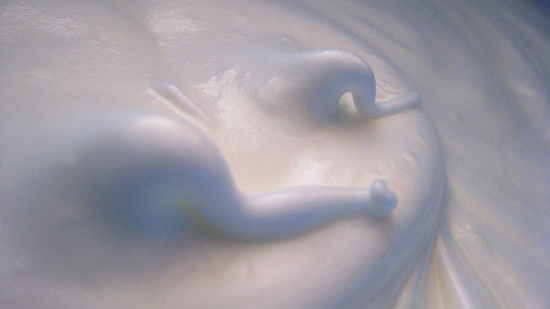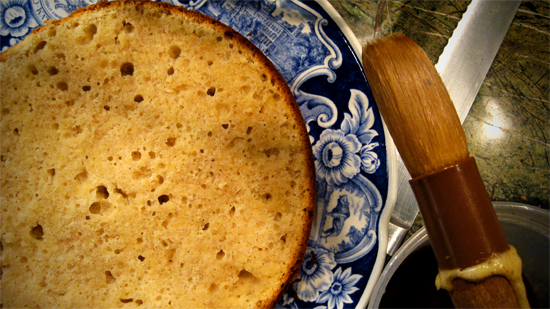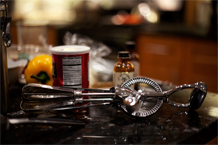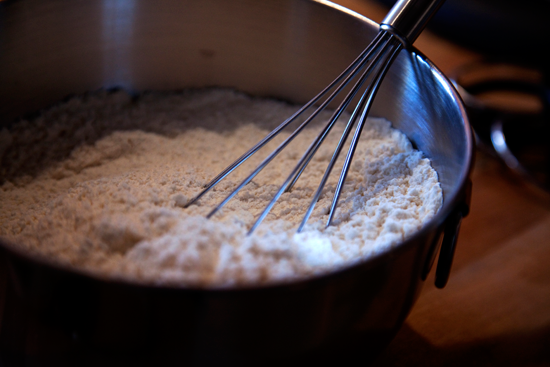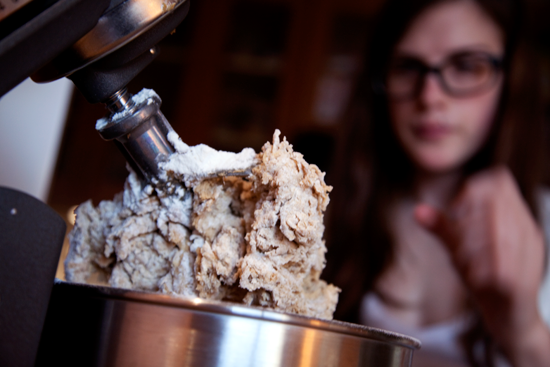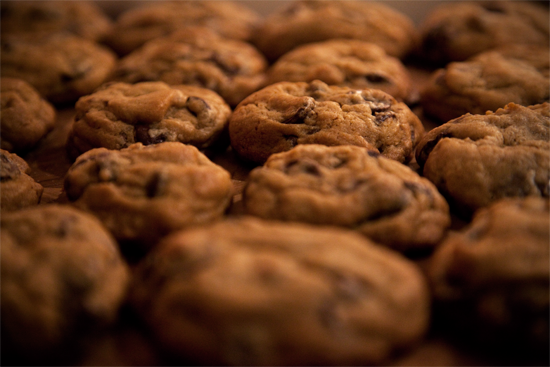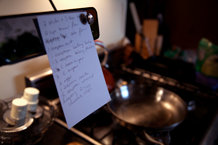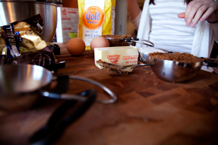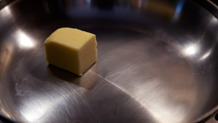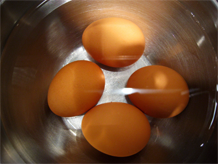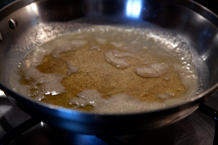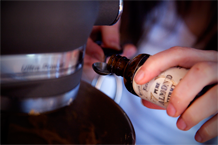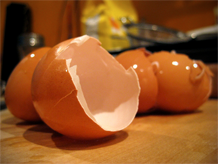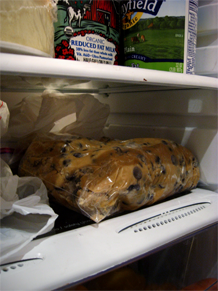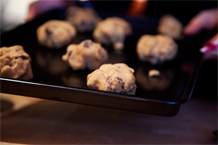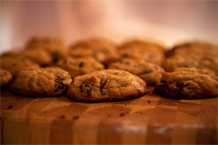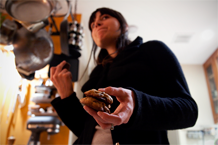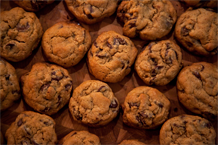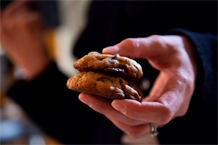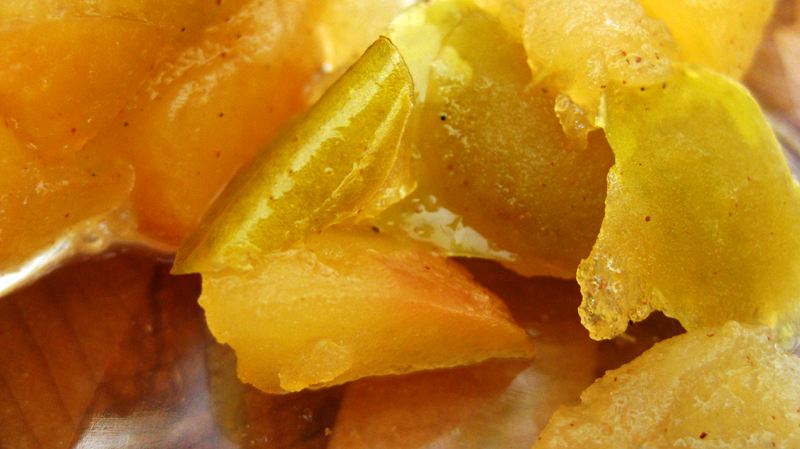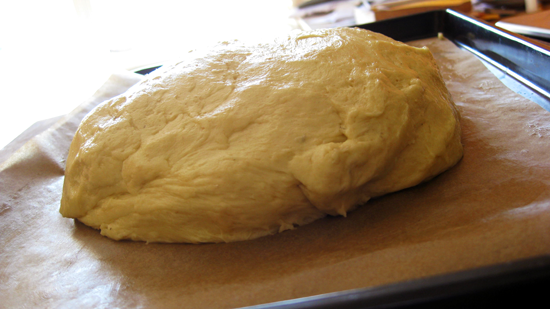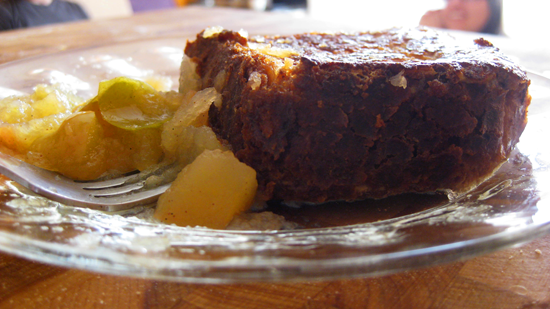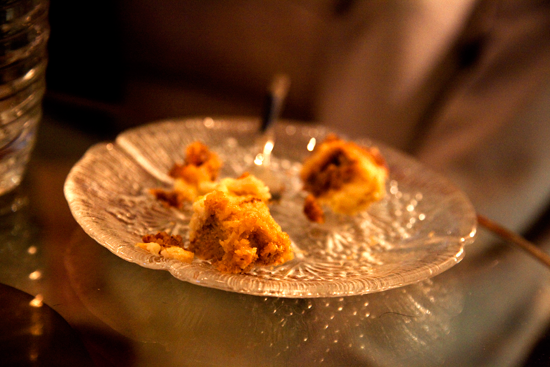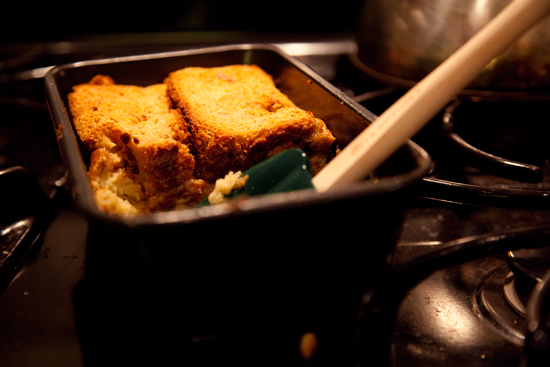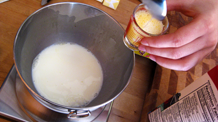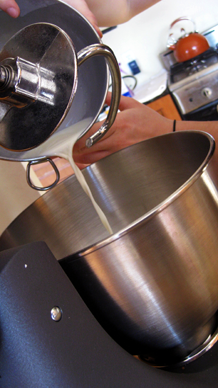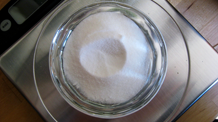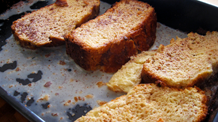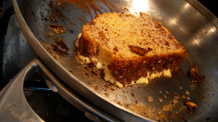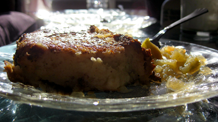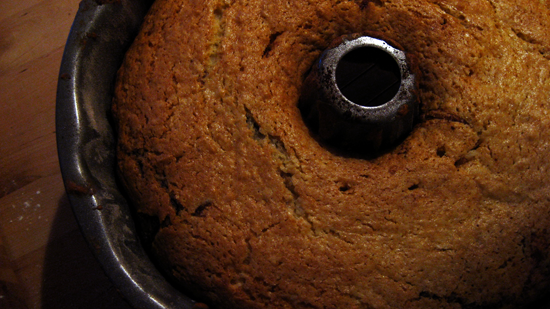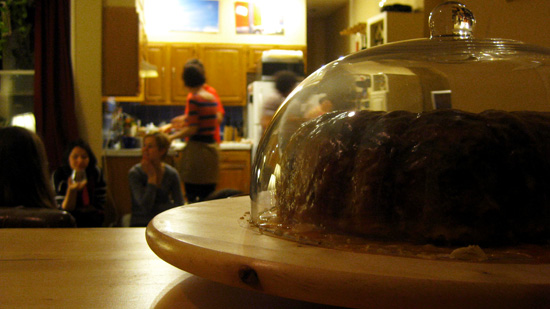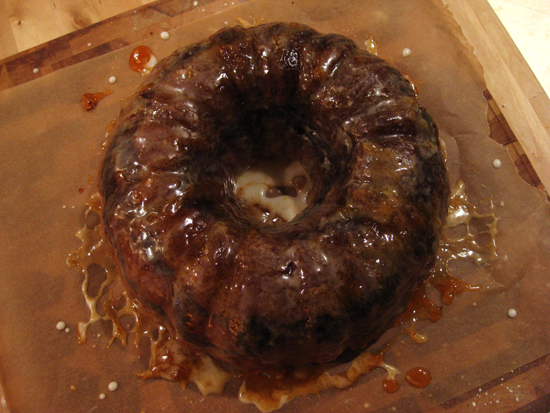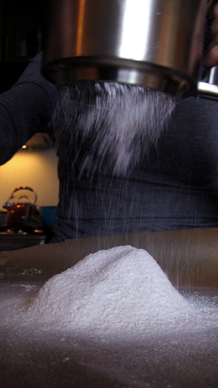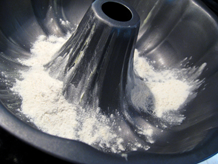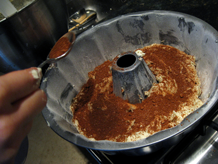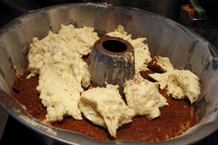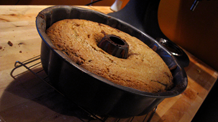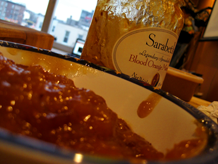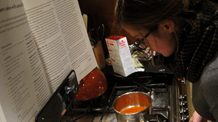Apparently, I was in the mood for some fancy-pants baking this past weekend. Like, multiple-day, million-step, fussy-as-can-be baking. As I mentioned in my last post, I’d been fantasizing recently about chestnuts. I just love those little guys so much; they’re sweet, they’re meaty, and I feel like they’re a bit underutilized in the baking world. I mean, sure, one always hears about chestnuts going in turkey stuffing or whatnot, and of course there are always those dudes selling them on the street, but I don’t think I see chestnut desserts quite as often as would be desirable. So I started poking around for something inspiring to do with chestnuts, and lo, I found one over at the Queen of Domesticity‘s place: a chestnut cake filled with chestnut pastry cream, frosted with a bittersweet ganache, and finally topped again with a chocolate-armagnac glaze. Holy moly.
can you say fussy?
Okay, so let me get one thing out there: I’m not the hugest fan of Martha Stewart, but I think she’s awesome at what she does, and generally, her recipes are really quite outstanding. So when I saw a recipe for chestnut cake on her site, I thought, “well, this looks a bit complicated, but certainly worth a try.” We were even planning to go to dinner at Kenan‘s dad’s house on Sunday, which gave me at least somewhat of a reason to get this adventurous on what otherwise would have been a fairly sleepy weekend. So, on Saturday morning, I went off to the grocery store to get supplies for this chestnut cake to end all cakes. First on my shopping list was a jar of whole roasted chestnuts, which rang in at a whopping $13. My original thought had been to get fresh chestnuts and roast and shell them myself, but alas, they were nowhere to be found, at least at my usual grocery haunts. Which left me stuck buying an outrageously expensive thing of nuts. At any rate, I also got a bit of armagnac (a type of brandy similar to cognac but made using a different type of still), milk, cream, eggs, and butter.
And then it was time to get started. First step: make a chestnut puree. This involves simmering some chestnuts, half a vanilla bean and some milk until the chestnuts soak up a lot of the liquid and everything cooks down. Then the mixture is strained and pureed until it comes out to about the consistency of a thick hummus. I tasted a bit of it, and it’s seriously, outrageously delicious. It’s sweet, it’s nutty, and I wanted to spread it on toast. So after that was done, make a pastry cream using the aforementioned chestnut puree: whisk some yolks together with sugar, add corn starch and some chestnut stuff, heat up some milk, temper the yolks with the milk, pour everything back into the pan, heat it until it comes to just under a boil, strain it and then let it hang out in an ice bath until fully cool. When those two things were done and I had cleaned everything up (I think I managed to use every mixing bowl in my possession at least twice), I called it quits for the day.
The following afternoon, I started in on the cake. Ms. Stewart’s recipe requested a nine-inch pan but didn’t specify how deep. Because I knew the cake was supposed to be cup into three layers, I figured she meant a springform with thick sides. But all I had was a ten-inch springform, so I threw caution to the wind and used two regular eight-inch pans and cut each of them into two layers, thus creating a four-layer cake. Take that, fussy recipe. So anyway, first, I sifted together the dry ingredients. Then I scraped out the seeds from half a vanilla bean pod and mixed it with some granulated sugar. Next came the butter, which is whipped with the sugar until it gets pale and fluffy, as per usual. Then the egg yolks, and then the flour mixture in three parts, alternating with the rest of the chestnut puree and a bit of milk. Then I whipped five egg whites with some sugar until they formed medium-stiff, glossy peaks, and folded that into the other mess. The batter is pretty thick, as these things go: almost like the batter for a tea cake. Then I baked the suckers until they puffed at the top and turned a golden brown, which took about an hour. While the cakes were baking, I whipped up the armagnac simple syrup, which would be coated on the cake layers later. There was still much more to come, but there wasn’t really much I could do to assemble the cake until we got to Kenan’s dad’s place, so I wrapped everything up and we left for Manhattan.
fun times, eating times
Over on the Upper East Side, I sliced the cakes into two layers each and coated them with armagnac syrup. Then I stacked the layers up, topping each one with a layer of pastry cream, and then let the whole lot hang out in the fridge for a while. And then we shared an amazing dinner with Kenan’s family, and, after too much wine and far too much food, it was time to do the rest of the cake. I scurried back to the kitchen and got to work on the whipped frosting. I simmered some heavy cream and then poured it over bitter sweet chocolate and whipped it until it got fluffy. Then I spread it over the cake, let it sit for a few minutes and got started on the glaze while the frosting was setting. I simmered more cream, poured it over more chocolate, let it stand to allow the chocolate to melt, mixed the stuff together, added some armagnac, and then drizzled the whole mess over the cake.
The thing look fantastic: a towering mountain of chocolate and chestnuts, all shiny and aromatic and lovely. I was very, very excited to dig into it. And… I was not entirely thrilled. Sure, the taste of chestnut was great, and the frosting and glaze were delicious, but the cake itself was a bit dry. Kenan’s sister pointed out to me that the texture was not unlike angel food cake, which I think is true. I mean, I don’t have any problem with angel food cake, but there was something a bit chewy about this particular cake that I wasn’t too happy about. Don’t get me wrong; it was certainly a good cake, but it wasn’t great, and I really don’t think it was worth so many hours of preparation and so much fuss to prepare. It also didn’t really seem to be worth the money: two sticks of butter, a lot of whole milk, lots of heavy cream, 14 ounces of baking chocolate, a jar of chestnuts, and armagnac. It is, however, very, very impressive, and not too shabby if you’re willing to put all the work into it. But for myself, I think next time I might do something more straightforward, like a chestnut pudding – perhaps using some of the chestnut puree, which is outstanding, in a more standard pudding or custard recipe.
And that was that. Not the best in the whole world, but still worth the try. Have at it, if you’re up to a challenge.





